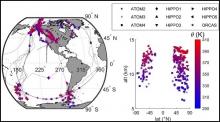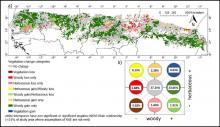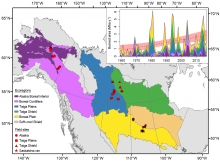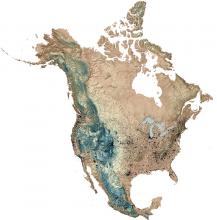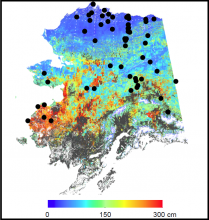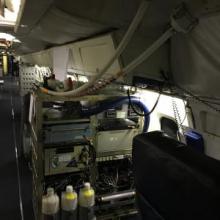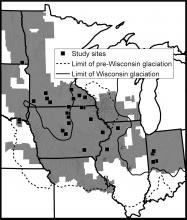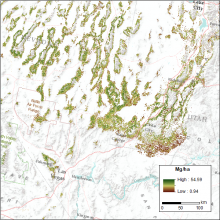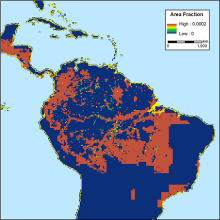A new dataset from the Atmospheric Tomography Mission compiles measurements of mean age of air.
ATom Compiles Flask Data from 2009 to 2018
Horizontal (left) and vertical (right) distribution of airborne flask sample locations identified as being of stratospheric origin. Thin dashed black lines on the map illustrate the flight tracks of all 9 campaigns of the 3 airborne projects. Symbols indicate the campaigns during which the stratospheric samples were collected, and colors show the potential temperature at which the sample was taken.

